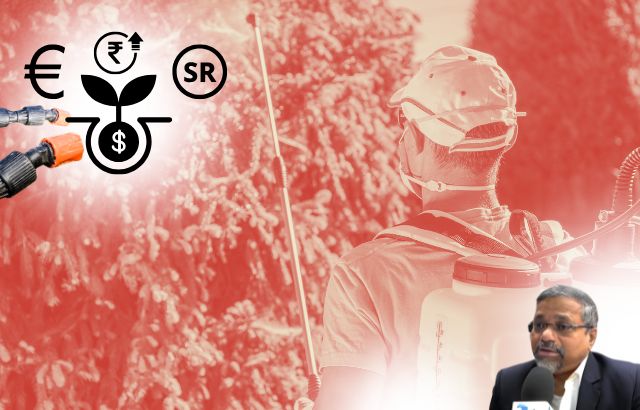Agriculture is evolving, and one of the most significant shifts is towards sustainable practices that not only benefit the environment but also improve farmers’ bottom lines. One such innovation is the use of green herbicide safeners. These products help protect crops from herbicide damage, leading to increased yields and greater economic benefits. Let’s explore this in more detail.
Increased Crop Yields

Stat: Studies indicate that the use of herbicide safeners can enhance crop yields by up to 20% in certain scenarios by mitigating herbicide damage.
Example:
For instance, a corn farmer using traditional herbicides without safeners might experience yield losses of up to 15% due to phytotoxicity. However, by employing herbicide safeners, this farmer could prevent that damage, resulting in an increase of 20% in yields.
Implication:
Higher yields mean increased revenue. Let’s break down some calculations to see how this translates into dollars:
Example Calculation:
If a farmer typically harvests 150 bushels of corn per acre and sells it at $4 per bushel, the revenue per acre is:
150 bushels × $4/bushel = $600
With a 20% increase due to the use of safeners, the new yield would be:
150 bushels + (150 × 0.20) = 180 bushels
The new revenue per acre becomes:
180 bushels × $4/bushel = $720
This results in an additional $120 in revenue per acre, which can add up to thousands depending on the size of the farm.
The Role of Green Innovators

Green innovators are at the forefront of developing and promoting these sustainable solutions. Their contributions include:
- Research and Development: Innovators conduct studies to understand the best combinations of herbicides and safeners to maximize crop protection and yields.
- Education and Training: They provide farmers with the knowledge needed to implement these practices effectively, ensuring they understand the benefits and application methods.
- Product Development: Creating eco-friendly safeners that are not only effective but also safe for the environment and non-target species.
Ask Jaiguru -FAQs on Green Herbicide Safeners

Q1: What are herbicide safeners?
A1: Herbicide safeners are specialized chemicals that protect crops from the harmful effects of certain herbicides. They enhance crop tolerance, enabling effective weed control while minimizing damage to the plants.
Q2: How do herbicide safeners function?
A2: Safeners enhance the crop’s ability to metabolize and detoxify the herbicide, which reduces the risk of phytotoxicity and allows for more effective weed management.
Q3: Are herbicide safeners environmentally safe?
A3: Yes, many herbicide safeners are formulated to be environmentally friendly, minimizing adverse effects on non-target plants and wildlife, while promoting sustainable agricultural practices.
Q4: Which crops benefit the most from herbicide safeners?
A4: Crops such as corn, soybeans, and rice show significant yield improvements with the use of herbicide safeners, especially in areas with high weed pressure.
Q5: Can herbicide safeners lead to long-term cost savings for farmers?
A5: Absolutely! By preventing herbicide damage and enhancing yields, safeners can result in long-term savings on inputs and increased revenue, making them a worthwhile investment.
Q6: What are green herbicide safeners?
A6: Green herbicide safeners are environmentally friendly chemicals designed to protect crops from herbicide damage while enhancing crop tolerance for effective weed management.
Q7: How do herbicide safeners contribute to increased crop yields?
A7: By minimizing herbicide-related damage, safeners enable crops to thrive. Research indicates they can boost yields by up to 20%, which translates to higher profits for farmers.
Q8: What kind of cost savings can farmers expect when using safeners?
A8: Farmers can save as much as 30% on herbicide costs through the use of safeners, as these products improve herbicide efficacy and reduce the need for multiple applications.
Q9: How do herbicide safeners improve labor efficiency?
A9: The application of safeners can reduce the time required for weed management by up to 25%, allowing farmers to focus labor on other important tasks, which enhances overall productivity.
Q10: Can using herbicide safeners enhance soil health over time?
A10: Yes! Safeners can improve soil health indicators by up to 15%, fostering healthier soil conditions that support increased productivity and better crop yields in the long term.
Q11: How do safeners help prevent the development of weed resistance?
A11: Safeners can reduce the likelihood of weed resistance by 30%, helping to prolong the effectiveness of herbicides and enabling farmers to save on future herbicide expenditures.
Q12: How can farmers effectively implement herbicide safeners?
A12: Farmers can gain insights on effectively using herbicide safeners by consulting agricultural extension services, participating in workshops, or working with agronomists specializing in sustainable farming practices.
Conclusion

The economic benefits of green herbicide safeners in agriculture are clear. With the potential for increased crop yields, reduced costs, and a positive environmental impact, farmers have a compelling reason to adopt these innovative solutions. As green innovators continue to develop and promote these products, the agricultural industry can look forward to a more sustainable and profitable future.
By investing in green herbicide safeners, farmers can harness the power of innovation to transform their operations and drive economic success.












